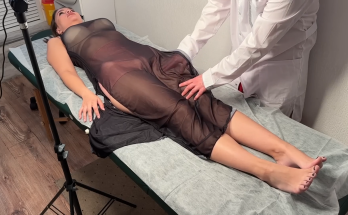In addition to the physical benefits, yoga also offers emotional and mental relief, which is especially important for those experiencing chronic back pain. Chronic pain often leads to frustration, stress, and anxiety, which can exacerbate the discomfort. Yoga’s mindfulness aspect helps quiet the mind, reduce emotional tension, and cultivate a sense of calm. This mind-body connection is what sets yoga apart from other forms of exercise and makes it particularly effective for those dealing with pain that affects both the body and mind.
The deep relaxation that comes with a consistent yoga practice can be just as important for healing as the physical stretches and strengthening exercises. Practices such as Yoga Nidra, a guided relaxation technique, can help calm the nervous system, release emotional blockages, and encourage the body to heal itself. This practice can be done either at the end of a yoga session or separately, and it’s an excellent tool for those who suffer from both mental stress and physical pain.
It’s also worth noting that yoga for back pain is not a one-size-fits-all solution. Every individual’s body is different, and it’s essential to listen to your own body during practice. If a certain pose doesn’t feel right or causes discomfort, don’t be afraid to modify it or skip it entirely. Yoga is about honoring where you are today, not pushing through pain. A good practice always adapts to your body’s current state, ensuring that you’re moving in a way that’s both safe and beneficial.
When it comes to alleviating back pain, yoga’s emphasis on the breath is especially powerful. By consciously breathing through each movement, you encourage the body to relax into the pose, increasing the effectiveness of the stretch. This breath awareness also helps create space between the vertebrae, which is especially beneficial for those dealing with herniated discs or other spinal issues. The act of deep breathing can also help release tension that builds up in the muscles around the spine.
For people with sedentary jobs, yoga can be a game-changer. Sitting for long periods can cause the muscles in the lower back to become stiff and tight, contributing to discomfort and pain. Integrating a quick yoga routine into your day, even if it’s just 10-15 minutes, can help counteract the effects of sitting. Poses like Forward Fold, Seated Twist, and Low Lunge can all be done at home or even in the office, offering a quick reset for your back and body.
Many people are also surprised by how much yoga can help with posture. Poor posture is a leading cause of back pain, especially when it comes to the lower back. Yoga teaches alignment and body awareness, which can significantly improve posture over time. Poses like Mountain Pose and Tadasana emphasize standing tall with an aligned spine, while supported backbends, such as Bridge Pose, help open the chest and encourage proper alignment in the upper back.
One of the biggest benefits of yoga for back pain is that it promotes long-term, sustainable health. Unlike short-term fixes, like pain medication or chiropractic adjustments, yoga helps to address the root causes of back pain by improving flexibility, strength, and posture. Regular practice supports spinal health, helps maintain mobility, and reduces the likelihood of future injuries. By incorporating yoga into your daily routine, you’re investing in the future health of your spine.
Another reason yoga is so beneficial for back pain relief is that it helps increase circulation to the muscles and tissues in the back. Poor circulation can lead to stiffness and discomfort, and by engaging in yoga regularly, you encourage blood flow to the areas that need it most. Poses like Downward Dog and Cobra are particularly effective in stretching and opening up the back, allowing for better circulation and the delivery of oxygen and nutrients to the muscles.
For those who have experienced back pain for an extended period, it’s easy to feel discouraged and believe that relief is unattainable. However, many yoga practitioners report significant improvements in their symptoms after several weeks or months of consistent practice. The key is patience. Healing takes time, and yoga is a journey, not a quick fix. Even if your back pain doesn’t disappear overnight, you’ll likely notice gradual improvements in your range of motion, posture, and comfort level.
Incorporating yoga into your routine doesn’t have to be intimidating. There are a variety of resources available to help you get started, from online classes and apps to local instructors. Many yoga videos and tutorials cater specifically to beginners, offering clear instructions and modifications to make poses more accessible. Whether you’re practicing at home or attending a class, the most important thing is to be consistent and to approach each session with a sense of curiosity and self-compassion.


